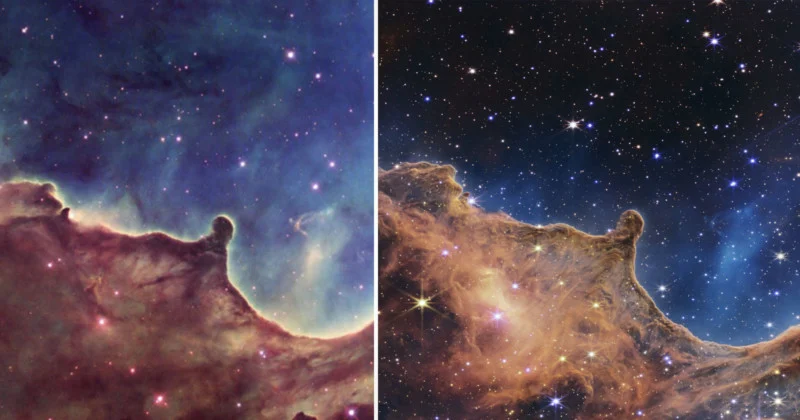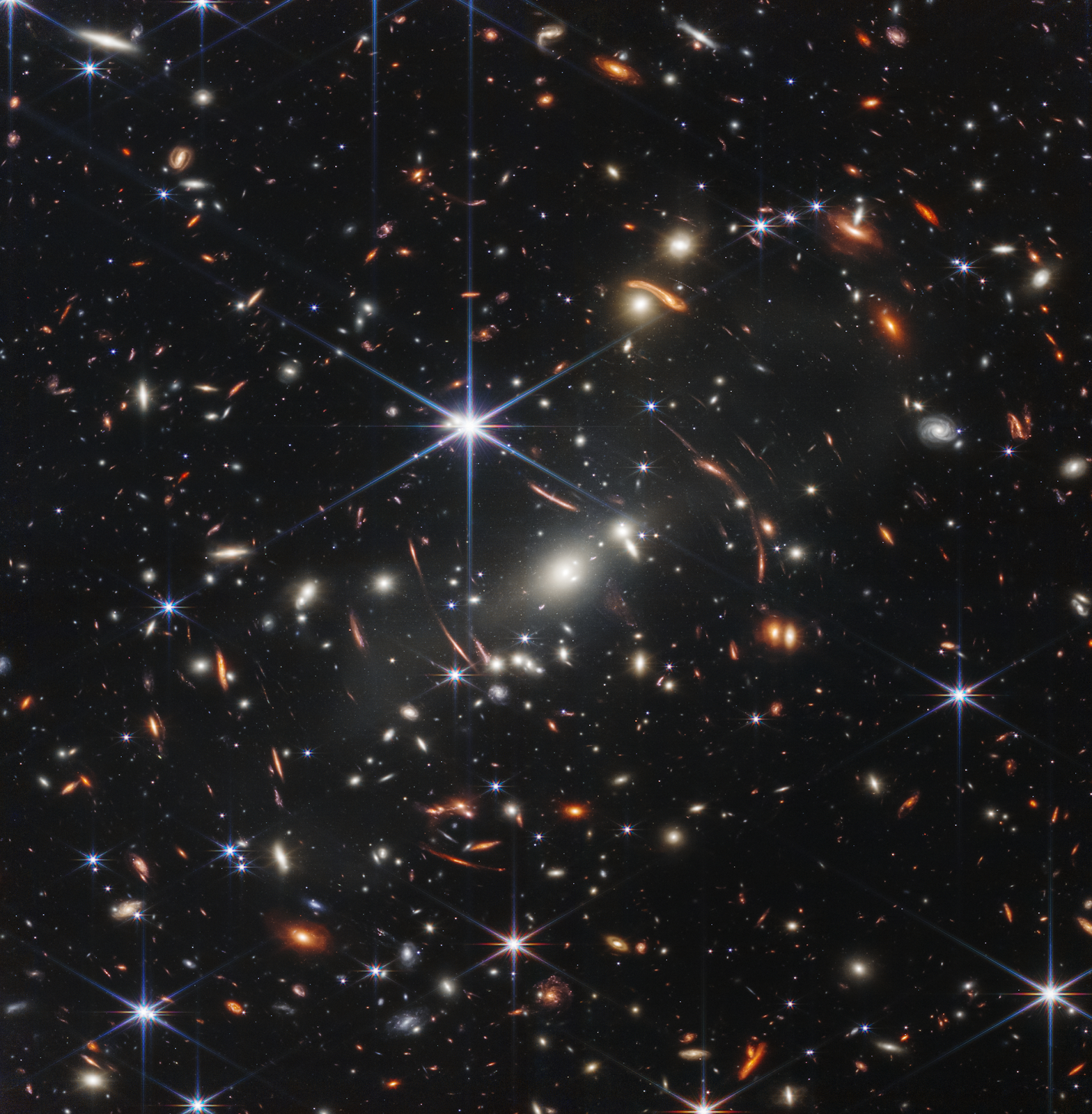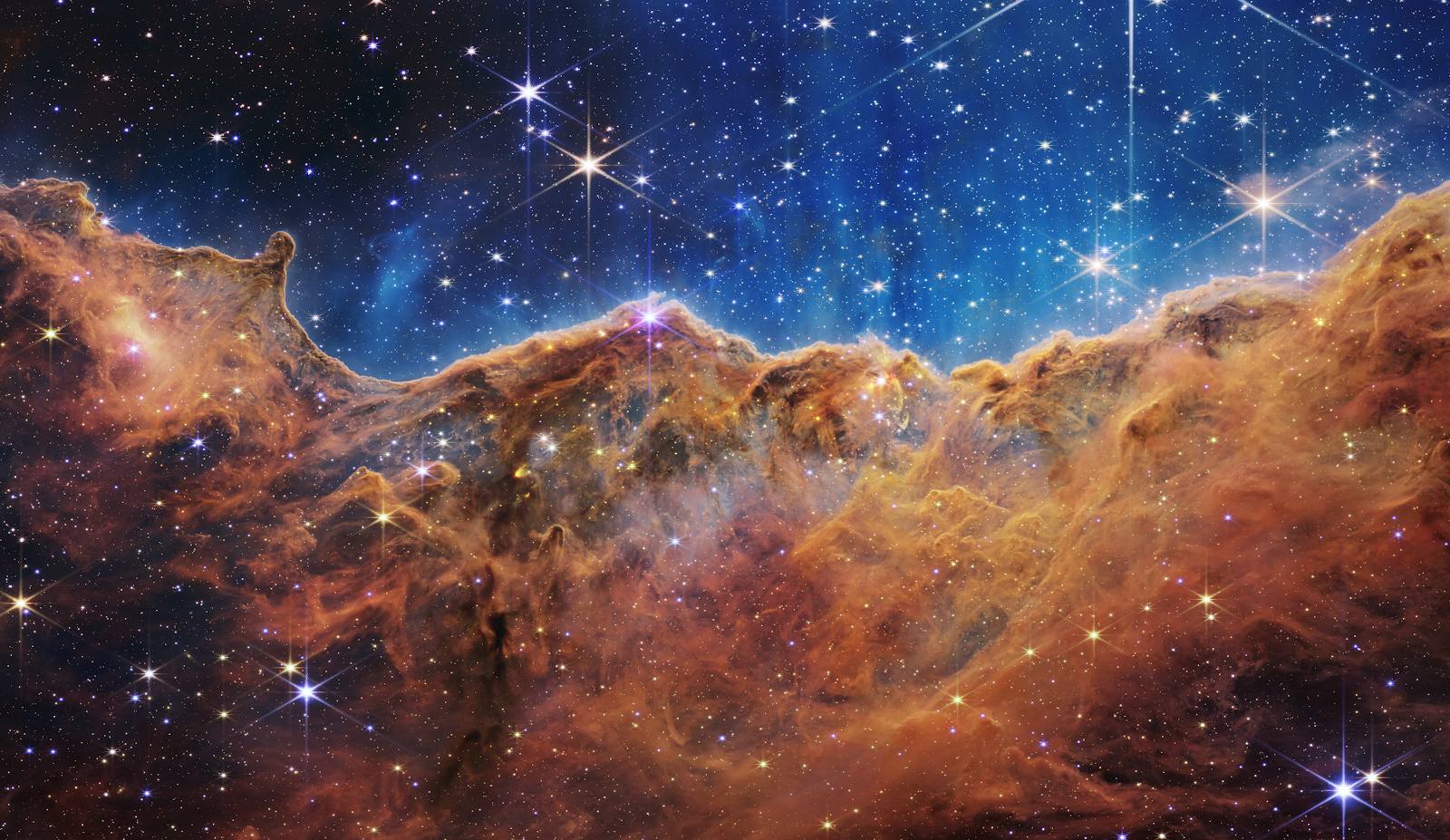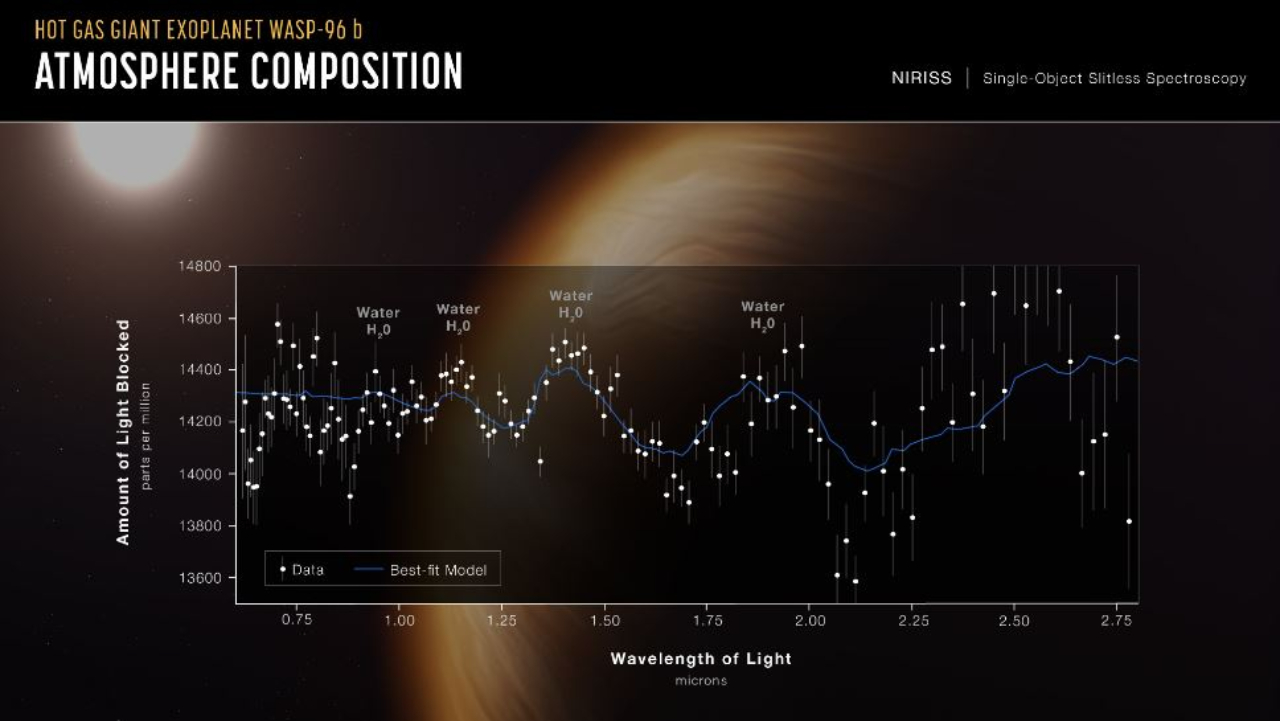NC
James Webb Space Telescope
Jul 20, 2022,
Technology has developed so far that we have achieved what was impossible hundreds of years ago. Measurements of black holes, evidence of dark matter, and the birth of stars are some examples of our new technology’s innovation. These findings are like a clear filter of truth - they provide evidence for broad research.
Still, more than 96% of our universe is un-observed. However, this is only a temporary issue: with technology evolving rapidly, we will soon complete this mythical journey of our universe too.
For now, we have achieved a great understanding of space and this is just the beginning. For instance, recently on December 25th, 2021 NASA launched a phenomenal object with the power to observe the very beginning of the galaxy itself. Yes, we are talking about the ‘James Webb Space Telescope ’.
This is not an ordinary telescope that measures the distance of exoplanets’, we are here to talk about the big bang and the formation of the first stars from small matters. But before we begin with its amazing features, we need to get some context.
HUBBLE SPACE TELESCOPE
However, the HST was a shortcoming on many factors: it mainly captured lights with visible and near-infrared wavelengths. Even though it was an impressive technology with far better features, there still needed some major improvements and this is why we have JWST.
Watch this for more
JWST
Beginning of the new era…
After 30 years of constant reattempting, and spending billions of dollars on manufacturing, NASA finally launched the great James Webb Telescope on December 25, Saturday.
WHAT IS JWST?
Unlike Hubble, which focused more on visible light and near-to infrared light, JWST observes in a lower frequency range, from long-wavelength visible light (red) through mid-infrared (0.6–28.3 μm).
It consists of 18 hexagonal-shaped gold-plated mirrors (approx 6.5) and is destined at Lagrange 2 (L2 point). Due to the enormous mass, structure, and also different components the JWST launch failed multiple times- but later it became a big breakthrough.
WHY JWST?
Infrared
The important feature of this telescope is to capture infrared light. Light has different frequencies: ultraviolet, infrared, and visible. The visible light is the same light we see in a rainbow consisting of 7 different colors and each color has a different frequency. Red has the lowest frequency ( higher wavelength ) whereas violet has the highest. These frequencies and wavelengths are important when considering measurements, especially distances.
When an object is far beyond, the wavelength of the light emitted by the object increases.
If the distance between the objects increases then the light emitted by the object stretches which results in a change in wavelength. Therefore if objects are far beyond, they appear more reddish (since red has a longer wavelength).
To that end, if objects are extremely far beyond (like the distance between galaxies) they appear in the infrared region. Since the infrared region does not lie on the visible light source, detecting the following light would need an object that could focus on the infrared region just like JWST. The universe is expanding exponentially, and the galaxies and other bodies also expand - this means that the distance between the objects increases. When the distance between the bodies increases, the wavelength stretches, and frequency decreases. The object will then appear more reddish and when the wavelength is far more stretched, the object emits light with infrared wavelengths.
This is why we cannot observe galaxies and events that are billions of light years away - they are in the infrared region.
For these reasons, JWST is made to measure low-frequency light (higher wavelength) which travels through gas dust compared to visible light. These features allow JWST to capture images beyond the dust. The infrared device cannot detect the visible spectrum and vice-versa. Since JWST does not capture the dust (visible light), the infrared light which penetrates through dust can be absorbed by JWST.
You can see the difference between Hubble (Left) and JWST (Right). These images show JWST not capturing visible but only infrared.
Mirror
JWST consists of 18 hexagonal gold-plated mirrors which have a 131.4 focal length. This focal length captures the images with a clear view. The mirror gives JWST a light-collecting area of about 25 square meters, about six times that of Hubble. In a nutshell, the JWST’s mirror is extremely powerful and can capture images very precisely.
The mirror is not constructed as a single big because it will be difficult to launch it into space, instead, they are divided into 18 parts folded and when launched into space they unfold themselves.
Instruments
JWST consists of 4 different instruments that have different functions. They operate at different wavelengths and by combining their functions we get clear images that are billions of light years away.
NIR CAM (Near Infrared Cam):

By blocking brighter lights and focusing more on dimmer, this will help to observe planets orbiting nearby stars.
NIRSpec (Near Infrared Spectrograph):
The NIRSpec operates at a wavelength range of 0.6 to 5 microns. The spectrograph is used to disperse light from an object - this helps to understand the physical properties like mass, and temperature of the object. NIRSpec will capture the composition of different chemicals and atoms present on the observed object. However, this can be a very long process since JWST focus on distant pasts like the big bangs and the formation of galaxies, JWST mirrors need to stare at them for many hours. This will require huge time to form a spectrum. Luckily, scientists have developed a new technology ‘micro shutter system’ which controls the light that makes the spectrum.
The ‘micro shutter’ enables NIRSpec to capture 100 spectra lines simultaneously. Because the NIRSpec observes distant objects, it needs to neglect the bright light and the micro shutter helps by blocking it, just like how squinting the eye helps to block brighter light.
MIRI (Mid-InfraRed Instrument):
MIRI is probably one of the most important instruments in the JWST. By definition, it measures up mid-long- infrared wavelength ranging from 5 to 27 μm. “ MIRI's camera will provide wide-field, broadband imaging that will continue the breathtaking astrophotography that has made Hubble so universally admired,” says NASA.While the other parts of JWST work in the near-infrared region, the MIRI’s camera captures deeper in infrared. This will help the JWST to observe objects/events which are billions of years away like the births of galaxies and stars.
Since MIRI observes light with an extremely longer wavelength, it needs to be cooler than the other instruments. For this reason, it has an additional cooling system: Pulse cool recorder, and Joul Thompson Loop heat exchanger. This allows MIRI to be at 7 kelvin (-266.15 degrees Celsius) temperature.
FGS/NIRISS (Fine Guidance Sensor & Near Infrared Imager and Slitless Spectrograph):
The FGS is a guider that allows the JWST to point precisely at given exoplanets to obtain high-quality images. The NearInfrared imager and Slitless Spectrograph are part of FGS/NIRISS that will investigate: first light detection, exoplanet detection and characterization, and exoplanet transit spectroscopy.FGS has a wavelength of 0.8 - 5 microns.
These are the 4 instruments that guide JWST to capture infrared light objects
Necessities
Since JWST is a powerful telescope with unique features, there are some caveats or requirements for this telescope to operate.
Lagrange Point / L2:
The L2 is a point where the Sun’s heat is completely blocked by Earth’s revolution. What does that mean?... Well, to capture the infrared images the JWST must regulate its temperature.
Since hot objects (objects with positive temperature) produce their own infrared and JWST measures high infrared objects, with heat( in JWST) it cannot function.
Remember observing/ measuring images are capturing their lights. Since the light produced by the galaxy billions of years ago is in the infrared region, we need JWST because it measures infrared. So if JWST has a normal temperature then the infrared is also produced by itself which means observing the objects will be difficult. (infrared produced by JWST and infrared produced by the distant objects will be mixed)
In short, we need to block the Sun’s heat for JWST to function completely. This is where the L2 point takes place.
The telescope has 2 different phases, one is coated/covered with sun shield protection which absorbs the maximum amount of sunlight while the other is blocked completely from the light which has a very minimum temperature.
Lagrange Points are the points where the gravitational pull of two large masses is equal to the centripetal force of the small object. This means that the objects which are placed on Lagrange points are stable and relative to each other.
There are 5 different Lagrange points: L1, L2, L3, L4, and L5.
L1, L2, and L3 are aligned on a straight path, while L3 and L4 are the points of an equilateral triangle. The telescope is at Lagrange 2 point, 1.5 million kilometers away from Earth
Why L2?
As discussed earlier, JWST should have a very cool temperature ( infrared reason). If the telescope is in the L2 region, Earth blocks the light and heat produced by the Sun. The blocking, though, is not enough which is why the telescope is covered by Sun shield protection. This process helps the JWST to have a minimum temperature and not produce infrared rays.
In L2, the telescope will be nearly aligned with the Earth’s orbit.
Since the gravitational force is not perfectly balanced with the centripetal force of the telescope, it might revolve near the Sun. To address this issue, small rocket clusters are used to balance this alignment. The L4 and L5, however, are perfectly aligned and don’t need any extra force.
Shape & Size:
The mass of the telescope is approximately 6200 kg with 705 kg of mirrors. This huge mass and size of JWST is a big concern for many scientists which is why it is divided into many parts.
When the JWST is launched from the Earth to Space, it is folded and after it reaches its destiny (L2), it starts to unfold its mirrors and other cameras. This is one of the reasons JWST had so many attempts before it was launched: one mistake in this unfolding process could make a huge impact on the telescope. The mirrors need to be perfectly aligned, the Sun Shield must be maintained correctly, and the cameras should function properly. Remember that this process is automatic, and once it is launched into space, there is nothing we can do about it.
The Images:
On July 12, NASA finally launched the JWST’s images. These images were not only magnificent and beautiful but they also gave us some cool insights into our past universe. There were a total of 5 different images released by JWST and each of them have a significant impact.
Before we understand the images, though, we must understand some concepts of light’s frequencies.
As we already discussed that light(visible) has different wavelengths: Red has a longer wavelength, unlike blue which has a shorter wavelength. These light frequencies indicate the age of the galaxy.
When a galaxy is very far away, let’s say 10 billion light years, the light emitted by that particular galaxy is pretty stretched. This means that the light emitted by that galaxy is ‘reddish’. Since red has a longer wavelength, the galaxies that are very far emit light with stretched wavelengths.
If the object is extremely far away then the light gets so stretched that it starts emitting ‘infrared’.
However, when a galaxy is not very far away it emits light with a shorter wavelength i.e ‘blue’.
In short, if the galaxy observed in JWST is ‘blue’ then it is a younger galaxy whereas if the galaxy/exoplanets appear ‘red’ then it’s old.
In this way, we can estimate the relative age of images observed.
SMACS 0723
This image of SMACS 0723 is a combination of galaxies that are 13.1 billion light-years far. As the universe was slowly expanding during that period, we can see that the galaxies are clustered up.
The blue light indicates that the galaxy is young- blue light has a shorter wavelength- whereas the red light indicates that the galaxy is old - red light has a longer wavelength.
2. Carina Nebula
This image became viral during its release and we can see why. The dust or gas particles in this space are the remains of the star’s formation. When stars are formed, it emits gasses and dust primarily called ‘nebulas’: 7 light-years tall.
Even though this image was already taken by Hubble Space, the details this new image provides are far better than Hubble. JWST uses multiple mirrors to capture different shots of the same images and combines them to provide incredible resolution.
This Carina Nebula is the jets of energy released by many star formations.
3. Stephan's Quintet
The Stephan’s Quintet is the cluster of 5 galaxies - 4 galaxies are 290 million light-years away, and the 5th is 40 million light years away from Earth.
The four galaxies that are close to others are attracted by gravity. In these early times, the universe was just increasing and gravity played a big role to combine them. The galaxies here are attracting dust and particles.
4. Southern Ring Nebula
When a star is dying, it combines with other stars and they keep revolving toward each other. The gravitational force exerted by the star attracts the other and the speed of revolving increases rapidly. Finally, the stars collide & black hole forms.
This process releases an enormous amount of nebula and energy.
In this image, the red star is the older star and it has started producing gases and particles, whereas the blue star is the young one that has yet to produce clusters and nebulae.
“Webb has the capability not just to image the Southern Ring Nebula, but to analyze its chemistry, understanding more about how stars shed their matter as they die. As the stars orbit each other they effectively stir the gaseous nebula, giving it its signature shape.”
5.WASP 96b
This is by far the most important image that any telescope had ever launched. Even though it seems so different than any other previous images, the information this image provides can reflect ‘alien habits’. Seriously!
This image by JWST shows the signs of water in the exoplanet called ‘WASP 96 b’. It gives a probability of life that might be present on that exoplanet. Webb can analyze the atmosphere and reflect the chemical composition.
When Webb was analyzing the atmosphere on WASP, though, it found plenty of water in the planet’s cloud. Now, this doesn’t mean that life is guaranteed there, in fact, Webb has not traced any biological evidence but it does give some slighter chance that life may be possible there. The Earth’s atmosphere is also made of gases: nitrogen, oxygen, etc.
6. The Cartwheel Galaxy
On August 4, 2022, NASA recently launched a new unique image called ‘Cartwheel galaxy’.
This image is the effect of the high-speed collision of a big spiral galaxy with a small galaxy. When the two galaxies collided, they produced immense energy creating the ring-like border.
The inner circle with bright light contains extremely hot dust including stars dust and large clusters. Similarly, the outer radius circle hosts star formation and supernovas. These clusters and supernovas interact with other specks of dust to form additional stars.
Webb used NIRCam and MIRI to produce the combination of two images. The NIRCam observed the image with the near-infrared wavelength whereas the MIRI used mid-infrared. Together, these instruments combined their images to produce a much clearer image of the Cartwheel galaxy.
The Hubble Space Telescope has also captured this image, but since HST cannot observe mid-infrared unlike MIRI, the images were not clearer.
“NASA and its Webb partners also released an image using only the data from NIRCam, which looks more like the original Hubble image, albeit with much less detail, and highlights the importance that MIRI plays in the final composite image.”
The Webb Telescope is a big accomplishment that took many years, and a big budget to complete. This long duration was however worth it: it provides the astonishing reality of our early universe.
The JWST can capture the evidence of early universe formation much likely the ‘big bang’. We are very lucky to witness this ground-breaking event where we see the formation of stars, alien planets, galaxies, and many more.
Many compare JWST with Hubble Space, but it is not a replacement for HST. With the help of both telescopes, we can observe extraordinary images with clear details. HST orbits around the Earth and can capture the light of visible to near-infrared wavelengths, whereas Webb can capture light with near-infrared to mid-infrared wavelengths. From this combination of both telescopes, we can capture light from visible to infrared wavelengths giving access to the early universe.
Follow:


.png)
.png)















What an amazing article man! I have never realized the details behind the JWST...